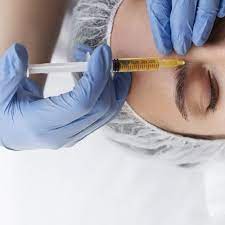Post-acne pigmentation is one of the most frustrating skin issues many individuals face, even after active breakouts have healed. These dark spots, also known as post-inflammatory hyperpigmentation (PIH), can linger for months and impact overall skin tone and confidence. While there are several treatments available to manage pigmentation, Platelet-Rich Plasma (PRP) therapy has emerged as a promising and natural option. If you're considering PRP Treatment in Islamabad, it’s worth understanding how this regenerative technique can help improve post-acne marks.
PRP therapy involves drawing a small amount of the patient's blood, processing it to concentrate the platelets, and then injecting or microneedling the PRP solution into the skin. Platelets are rich in growth factors that stimulate skin regeneration, collagen production, and tissue repair. This makes PRP not only beneficial for overall skin rejuvenation but also highly effective in targeting pigmentation concerns caused by acne.
When it comes to post-acne pigmentation, PRP helps in several ways. First, it accelerates cell turnover and healing by boosting the skin's natural repair process. As a result, pigmented areas begin to fade over time. Second, PRP stimulates collagen and elastin production, improving skin texture and tone while minimizing the appearance of scars and dark spots. Lastly, PRP enhances the effects of other treatments like microneedling, making it a powerful combination for those struggling with long-term discoloration.
Clinical evidence and anecdotal experiences from dermatologists indicate noticeable improvements in pigmentation and skin clarity after a series of PRP sessions. Patients often report smoother, more radiant skin within a few weeks of starting treatment. Unlike chemical peels or laser treatments, PRP is minimally invasive and uses the body’s own healing mechanisms, reducing the risk of adverse reactions or further pigmentation—especially in individuals with darker skin tones who are more prone to PIH.
The success of PRP for pigmentation also depends on factors like the severity of the discoloration, skin type, and the number of sessions undertaken. Typically, a course of 3 to 6 sessions spaced a few weeks apart is recommended for optimal results. PRP is also ideal for those looking for a more natural and gradual improvement without harsh chemicals or downtime.
In conclusion, PRP therapy offers a safe and effective approach for treating post-acne pigmentation. Its ability to harness the body’s own regenerative power makes it a standout choice for individuals seeking long-term skin improvement. For those in Pakistan, Capella Esthetics in Islamabad provides expert-led PRP services tailored to your unique skin needs. Whether you're just starting your skincare journey or looking for an advanced solution for stubborn acne marks, PRP could be the transformative step you’ve been searching for.





Comments